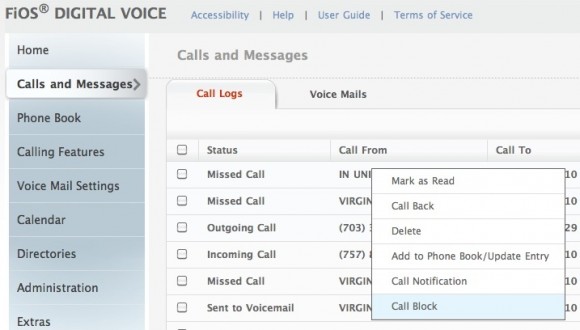
We haven’t had a true home phone since 2005, when we sold our last place in favor of a gypsy lifestyle. But, now that we’ve settled down once again, we’ve bundled voice services with our Verizon FiOS plan. I’d probably have settled for putting the first gen Ooma back into service or abstaining entirely. Especially as the wife subscribes to an unlimited AT&T wireless calling plan. Yet, the way Verizon constructs bundles, their triple play (voice, data, tv) is the best value – effectively giving us unlimited national calling and various phone features for about just $10/month. So, why not?
The original idea was the new home phone line would exist for our convenience (i.e. outgoing calls) and we’ve only given the number to relatives for emergency use. But I seem to have forgotten how insidious the telemarketers can be. Sadly, the worst offender has been the Indiana University (which is where I picked up my master’s degree). Due to where our phones are located and the times when they typically call (dinner), I’ve been unable to pick up in time and tell them to knock it off. I began contemplating dropping Verizon voice as it’s become a (minor) nuisance and we’ve made only a handful of outbound calls in the last couple months.
So yesterday I went online to see if Verizon offered some sort of Ooma-esque blacklist for FiOS Digital Voice. And, given the existence of this post and screenshot above, you already know that they do. Once the feature has been enabled, nuking specific incoming numbers is as easy as bringing up a context menu and clicking Call Block via the VZN web portal. Although, we’re limited to prohibiting only ten total numbers (along with all anonymous callers). I’m not exactly sure how future calls from these numbers are handled – are the perpetrators sent to voicemail, get a busy signal, or, better yet, receive some sort of message indicating that they’re unwelcome ’round these parts?
Read more



